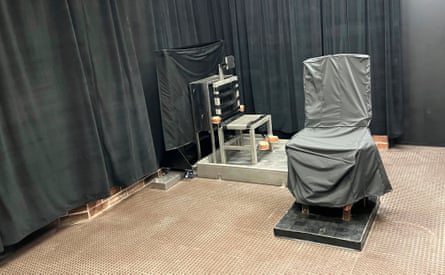Mikal Mahdi: The Botched Firing Squad Execution That Sparked Debate in South Carolina

The botched execution of Mikal Mahdi by firing squad in South Carolina has reignited nationwide debate over capital punishment practices in the United States. This incident not only raised questions about the humaneness of execution methods but also the protocols intended to prevent unnecessary suffering.
Who Was Mikal Mahdi?
Mikal Mahdi was sentenced to death in 2006 for the 2004 killing of Orangeburg County Public Safety Captain James Myers. In April 2025, Mahdi became the second person executed by firing squad in South Carolina since the state revived this controversial method. The state offered three methods for execution: firing squad, electric chair, or lethal injection. Mahdi opted for the firing squad, hoping for a swift and less painful end compared to other options.
Questions Surrounding the Execution
Mahdi's execution was supposed to be straightforward: three shooters, aiming for the heart, ending his life quickly and as painlessly as possible. However, reports from the autopsy and witness accounts tell a different story. According to an NPR investigation, only two bullets struck Mahdi rather than three as protocol dictates, and neither hit his heart directly. Instead, the bullets caused damage to his liver and pancreas, and Mahdi reportedly suffered "excruciating conscious pain and suffering for about 30 to 60 seconds" before dying.
Eyewitnesses described Mahdi crying out, breathing heavily, and groaning multiple times. These accounts were corroborated by both independent and state-commissioned forensic experts. This delay in death contradicted expectations that firing squad executions bring about immediate unconsciousness and death within 10 to 15 seconds.
Autopsy Findings and Legal Fallout
Autopsy records, as reported by The Guardian, indicated that the shooters missed the intended target area on Mahdi's chest. South Carolina regulations require shooters to fire bullets "in the heart ... calculated to do maximum damage ... and thereby immediately stop the heart." Instead, Mahdi's autopsy showed two entrance wounds to the lower chest, barely disrupting the heart and causing a slower, more painful death.
Forensic pathologists also questioned the plausibility of two bullets following precisely the same path to account for the missing third wound. Dr. Jonathan Arden, reviewing the case for Mahdi’s lawyers, noted that it was "extraordinarily uncommon" for two bullets to enter through one wound. The low placement of the target, along with the trajectory of the bullets, suggested failures either in protocol or execution technique.
Official Response and Ongoing Controversy
The South Carolina Department of Corrections has disputed claims that Mahdi's execution was mishandled. Their statement, detailed in a report by WIS News, asserts that all three bullets were fired and hit Mahdi, with two following the same trajectory. Still, Mahdi's legal team and independent experts remain unconvinced, asserting that the official accounts do not match physical evidence or witness testimony.
The heated debate continues, as advocates against the death penalty argue this case underscores the risk of unnecessary suffering and the unpredictability of supposedly "humane" methods.
The Bigger Picture: What Comes Next?
Mahdi's execution was a part of South Carolina's resumed capital punishment efforts after years of dormancy, amidst ongoing struggles to obtain lethal injection drugs. Nationwide, the death penalty remains a contentious issue; botched executions, whether by firing squad, lethal injection, or other methods, add fuel to the discussion about whether any form of capital punishment can ever guarantee justice without cruel or unusual suffering.
As reported in detailed investigations, including NPR's report, Mahdi's case challenges assumptions about the speed and certainty of firing squad executions. For now, it stands as a grim reminder of the gravity and risks associated with state-sanctioned death.
Conclusion
The fate of Mikal Mahdi has opened up new questions about execution methods and accountability. Whether you support or oppose the death penalty, this case exemplifies why public scrutiny and transparency are crucial when life and the law intersect. If you want to delve deeper, you can read more thorough coverage and analysis on NPR and The Guardian.